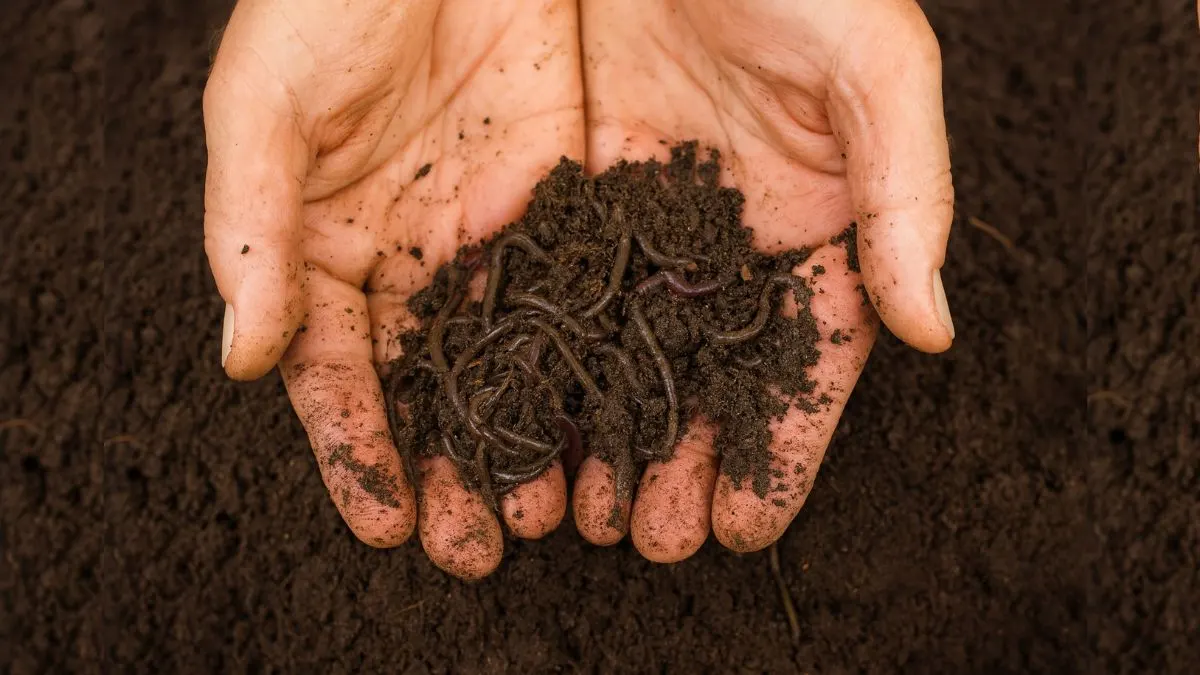If you’ve ever wanted to turn your kitchen scraps into rich, dark fertilizer without spending a dime, then vermicomposting might be the answer. This sustainable technique is more than just “worm composting.” It’s the scientific method of making compost, by using earthworms to recycle waste into nutrient-rich soil food.
During my gardening journey, I started small by tossing vegetable peels and tea leaves into a worm bin. In just a few weeks, I noticed how soft and fertile the resulting compost felt compared to store-bought manure. It wasn’t only cheaper but also healthier for my plants.
What Exactly is Vermicomposting?

At its core, vermicomposting is a type of composting in which certain species of earthworms are used to break down organic matter. Unlike traditional composting that relies only on microbes, this process uses a combination of earthworms and microorganisms to decompose material.
It’s a simple biotechnological composting process—earthworms ingest organic waste like vegetable peels, garden clippings, and paper, and excrete it as nutrient-packed castings. The result is organic manure produced by earthworms, often called “black gold” by gardeners.
How Does Vermicomposting Work?
The process is a natural process whereby earthworms convert waste material with rigid structures into compost. Here’s how it unfolds:
- Earthworms consume biodegradable waste such as food scraps, paper, and leaves.
- Inside their gut, waste is broken down by enzymes and microbes.
- The end product—called worm castings—is rich in nitrogen, phosphorus, potassium, and micronutrients.
This makes vermicompost not just a fertilizer but a soil conditioner that enhances both fertility and structure.
Also Read: Homemade Organic Fertilizer: Simple Ways to Nourish Your Plants Naturally
Benefits of Vermicomposting
- Soil Enrichment: Vermicompost improves soil aeration, water retention, and structure. Its humus content encourages better root growth.
- Nutrient Boost: Unlike synthetic fertilizers, vermicompost provides slow-release nutrients. Studies show coffee grounds, vegetable scraps, and biodegradable waste when converted by worms, release up to 2% nitrogen content.
- Eco-Friendly Waste Management: By converting biodegradable waste into organic manure, vermicomposting reduces landfill loads and greenhouse gas emissions.
- Plant Health and Growth: The castings contain plant hormones and enzymes that boost plant health, improve soil health, and increase crop yields naturally.
How to Start Vermicomposting at Home
Step 1: Choose a Container
A wooden or plastic bin with small holes for ventilation works well. Keep it in a shaded area, away from direct sun.
Step 2: Prepare Bedding
Use shredded paper, coco peat, or dried leaves. This creates a soft environment for the worms.
Step 3: Add Earthworms
Red wigglers (Eisenia fetida) are the most common worms used for a process that relies on earthworms and microorganisms.
Step 4: Feed Them
Add kitchen scraps like fruit peels, tea bags, and small amounts of paper. Avoid meat, dairy, and oily food.
Step 5: Harvest Vermicompost
In 6–8 weeks, you’ll see dark, crumbly compost—your organic manure produced by earthworms.
Also Read: The Real Reason Your Soil Dries Out Too Quickly
Types of Waste You Can Vermicompost
Suitable Waste |
Not Recommended |
Vegetable scraps |
Meat and fish |
Fruit peels |
Oily food |
Coffee grounds |
Dairy products |
Paper and cardboard (shredded) |
Citrus in large quantities |
Garden clippings |
Plastic and synthetic waste |
Vermicomposting vs Traditional Composting
Aspect |
Vermicomposting |
Traditional Composting |
Key Process |
a type of composting in which certain species of earthworms are used |
Relies solely on microbes |
Time Taken |
6–8 weeks |
3–6 months |
End Product |
organic manure produced by earthworms |
General compost |
Nutrient Density |
Higher (contains plant hormones, enzymes) |
Moderate |
Also Read: 5 Brilliant Ideas for Repurposing Plant Pots in Your Garden
Personal Gardening Experience
When I started using vermicompost, my tomato plants doubled their fruit yield compared to the previous season. The soil stayed moist longer, and I noticed fewer pest problems. For me, this confirmed that vermicomposting isn’t just an eco-friendly idea but a gardener’s secret weapon.
Vermicomposting is more than just worm farming. Whether you’re in Canada, the USA, or anywhere else, this simple biotechnological composting process can transform the way you garden.
👉 If you’re serious about sustainable living, set up a worm bin today and see how a process that relies on earthworms and microorganisms can make your garden thrive naturally.






